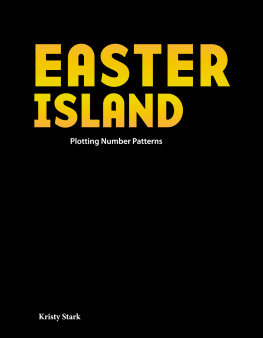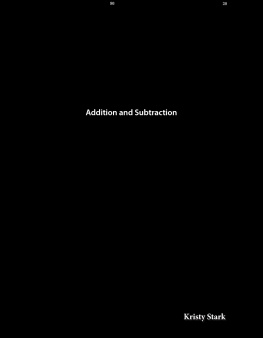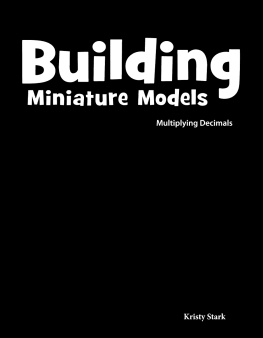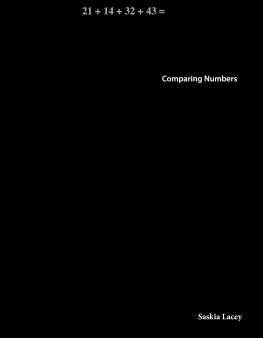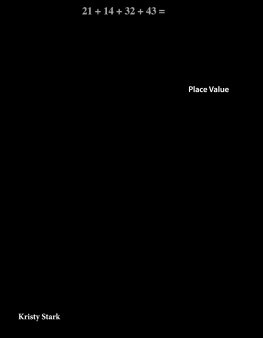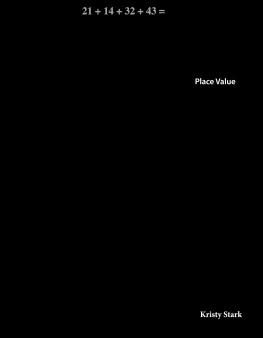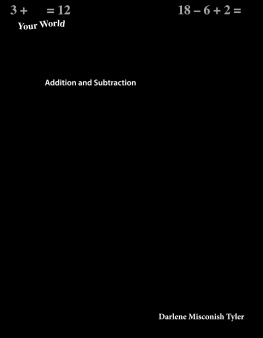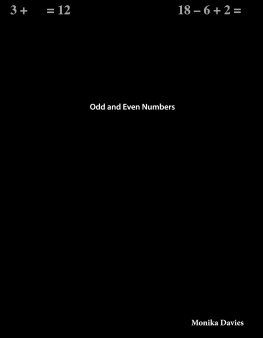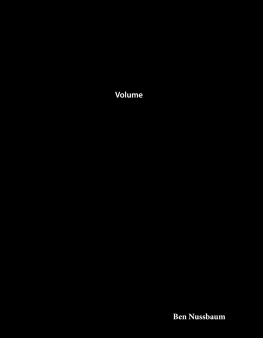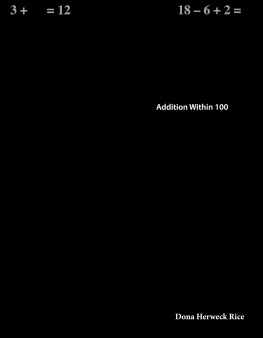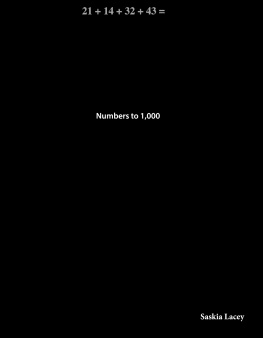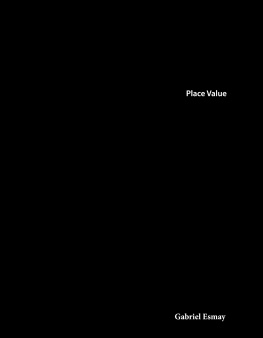Kristy Stark - Travel Adventures: Easter Island: Plotting Number Patterns
Here you can read online Kristy Stark - Travel Adventures: Easter Island: Plotting Number Patterns full text of the book (entire story) in english for free. Download pdf and epub, get meaning, cover and reviews about this ebook. year: 2018, publisher: Teacher Created Materials, genre: Politics. Description of the work, (preface) as well as reviews are available. Best literature library LitArk.com created for fans of good reading and offers a wide selection of genres:
Romance novel
Science fiction
Adventure
Detective
Science
History
Home and family
Prose
Art
Politics
Computer
Non-fiction
Religion
Business
Children
Humor
Choose a favorite category and find really read worthwhile books. Enjoy immersion in the world of imagination, feel the emotions of the characters or learn something new for yourself, make an fascinating discovery.
- Book:Travel Adventures: Easter Island: Plotting Number Patterns
- Author:
- Publisher:Teacher Created Materials
- Genre:
- Year:2018
- Rating:5 / 5
- Favourites:Add to favourites
- Your mark:
- 100
- 1
- 2
- 3
- 4
- 5
Travel Adventures: Easter Island: Plotting Number Patterns: summary, description and annotation
We offer to read an annotation, description, summary or preface (depends on what the author of the book "Travel Adventures: Easter Island: Plotting Number Patterns" wrote himself). If you haven't found the necessary information about the book — write in the comments, we will try to find it.
Travel Adventures: Easter Island: Plotting Number Patterns — read online for free the complete book (whole text) full work
Below is the text of the book, divided by pages. System saving the place of the last page read, allows you to conveniently read the book "Travel Adventures: Easter Island: Plotting Number Patterns" online for free, without having to search again every time where you left off. Put a bookmark, and you can go to the page where you finished reading at any time.
Font size:
Interval:
Bookmark:
0covercover.xhtmlTravel Adventures EASTER ISLAND Plotting Number Patterns Kristy Starkcover1page0001page0001.xhtml22page0002page0002.xhtml33page0003page0003.xhtml44page0004page0004.xhtmlTable of Contents Welcome to Easter Island 4 Birth of the Island 6 The First Inhabitants 9 Island Life and Culture 12 Explorers Arrive 20 Easter Island Today 24 Problem Solving 28 Glossary 30 Index 31 Answer Key 3255page0005page0005.xhtmlWelcome to Easter Island! Easter Island is not a land of rabbits, colorful eggs, or spring flowers. It is a land with high peaks that were formed by volcanoes. It's a place with lakes of water in the craters of old volcanoes. Few trees dot its landscape. And, it is best known for more than 600 giant stone statues that give the island a sense of mystery. Easter Island is a small island located in the Pacific Ocean. Like all islands, it is surrounded by water on all sides. Many people are not familiar with it. Only a small number of people live there. Few tourists visit. This is because Easter Island is so far from most places. Still, the remote island does get some visitors. The visitors exploring Easter Island see its lakes, craters, peaks, and famous statues. volcanic crater66page0006page0006.xhtmlGalpagos Islands (Ecuador) Ecuador Brazil Peru Bolivia Paraguay Argentina Chile Easter Island SOUTH PACIFIC OCEAN77page0007page0007.xhtmlBirth of the Island Islands are created by volcanic activity. It starts when magma rises from under Earth's crust. Magma eventually breaks through the ocean floor and becomes lava. When the lava cools, it leaves a formation of land. This process formed the 63 square miles (163 square kilometers) of Easter Island. It is believed that the island was formed about half a million years ago. The volcanoes are now inactive. They no longer spew lava to add to the size of the island. There are three main volcanoes that helped create the island. The island is shaped like a triangle. The three main volcanoes are found at each of the three points of the triangle. Rano Kao EASTER ISLAND Terevaka Volcano Poike Volcano Rano Kao Volcano88page0008page0008.xhtmlThe southwestern point is where Rano Kao (RAH-no cow) is found. It is the largest volcano on the island. It is so big that it can be seen from space! Terevaka (TEHR-ih-vah-kah) is found on the northern point. It is the tallest volcano on the island. Its peak is about 1, 969 feet (600 meters) above sea level. The Poike (POY-kay) volcano is found on the east side of the island. It is the oldest of the three volcanoes. LET'S EXPLORE MATH Rano Kao is an inactive volcano. Rainwater accumulates in its crater. Imagine that scientists keep track of the total rainfall by recording the amount in a table each month. Month Total Rainfall (millimeters) 1 115 2 230 3 345 4 460 5 575 1. Describe the pattern. 2. If the pattern continues, what will the total rainfall be at the end of months 6, 10, and 12?99page0009page0009.xhtmlA team competes in a canoe competition.1010page0010page0010.xhtmlThe First Inhabitants Easter Island is very remote. Because of this, no one knows for certain when the first people arrived on the island. It is estimated that the first people arrived around AD 400. The people only had stone tools on hand to build their boats. They sailed the boats from their home to the new island. The first inhabitants called the island and themselves Rapa Nui (RAH-pah NOO-ee). The people who live there today still use this name. It is likely that these people were Polynesians. But, the exact place they came from is not known. Some scientists think they came from the Marquesas (MAHR-kay-suhs) Islands. Other people think they came from Chile. Wherever they came from, they traveled a long way to get there. The Marquesas Islands are more than 2, 275 miles (3, 662 kilometers) away. Chile is about 2, 200 mi. (3, 541 km) away. The Rapa Nui people build their fishhooks and statues from bone and rock found on the island.1111page0011page0011.xhtmlWhy Did They Stay? The reasons why people first came to Easter Island are debated. From any direction, an ocean crossing would have taken at least two weeks. The island did not have an abundance of resources. People still made the island their home. They found that the island provided all they would need to survive. When people arrived, the island was covered with palm trees. Experts believe that people used palm trees for many things. Palm trees provided fruit to eat. They provided sap that could be used to make honey, syrup, and wine. Palm trees also provided necessary materials. Wood was used to construct homes. Wood was used to build canoes, too. Canoes allowed people to go into the ocean to hunt for animals, such as porpoises. The island also has other plants and animals, such as toromiro (TOR-oh-meer-oh) trees, seals, parrots, and herons. People brought chickens, sweet potatoes, and bananas. These items, combined with the island's resources, helped them live and thrive. toromiro trees1212page0012page0012.xhtmlLET'S EXPLORE MATH Toromiro trees used to grow in abundance on Easter Island. Now, they only grow in botanical gardens. Imagine that scientists plant a toromiro tree and record its height each year. Year Height (feet) 0 0 1 2 2 4 3 6 4 8 5 10 6 12 7 14 8 16 1. Write each year and height as an ordered pair. 2. Graph the ordered pairs on a coordinate plane. 3. How is the pattern shown in the table and graph?1313page0013page0013.xhtmlIsland Life and Culture Early Rapa Nui people built the large statues for which Easter Island is known. These statues are called moai (MOH-eye). The first moai were made around AD 800. At first, they were small and round. They were only heads with eyes. Over time, the artists improved their skills. They could better shape the stones. So, they carved larger statues with more details. These moai had ears, noses, fingers, and other body parts. Experts think that the last moai were made as late as the 1860s. The statues reflect the culture of the island's people. They built moai to honor their ancestors. They believed that their ancestors' spirits, or mana, continued to live after their deaths. So, statues were built to contain a person's spirit. They believed the spirits in the statues had influence over events in the physical world. Some moai have crowns made from a red stone. It is likely that the crowned moai were used in special rituals.1414page0014page0014.xhtmlLET'S EXPLORE MATH Imagine that two scientists spend a week studying moai. They each keep track of the total number of moai they examine. Days Scientist A's Total Number of Moai Scientist B's Total Number of Moai 0 0 0 1 3 6 2 6 12 3 9 18 4 12 24 5 15 30 6 18 36 7 21 42 1. If the patterns continue, how many total moai will each scientist study after 30 days? 2. Other than Day 0, will there ever be a day when the scientists study the same total number of moai? How do you know?1515page0015page0015.xhtmlMoai started as stones. The Rano Raraku (RAH-no RAH-rak-ew) volcano was the quarry that supplied these stones. The ash from this volcano was soft enough to carve. Some moai have red crowns. A crater called Puna Pau (Poo-nuh POW) was the source of the stone used to make the crowns. People completed many steps to create moai. First, a large stone was chosen from the volcano. Next, an artist drew the moai onto the rock to determine its appearance. Then, the artist used tools to shape the rock into a statue. When finished, moai did not stay at the quarry where they were made. Instead, they were moved to the village of the artist's ancestors. Some moai were moved as far as 14 mi. (23 km). This was not an easy task because many of the statues were enormous. The largest moai is about 32 ft. (10 m) tall and weighs about 82 tons (74, 390 kilograms)! After moving moai, people placed them so they faced the village. Moai were thought to watch over and protect everyone living there. So, people believed it was worth the work to move the tall, heavy moai.1616page0016page0016.xhtmlLET'S EXPLORE MATH Researchers conduct experiments to see how far they can move moai. Imagine that two research groups use a graph to record the total distance (in meters) they move moai during an experiment. Use the graph to answer the questions. Distance Moai Are Moved y 80 70 60 50 40 30 20 10 0 1 2 3 4 5 meters(m) x minutes Key : Research Group A Research Group B 1. How far does each research group move the moai after 4 minutes? 2. If the patterns continue, how far will each group move the moai after 10 minutes? 3. Will the lines ever intersect? Why or why not? Rano Raraku1717page0017page0017.xhtmlScientists are not sure how people moved the statues. They did not have the machines that exist today. They had to rely on stone, rope, wood, and human strength. Some experts think that people rolled the statues from the quarry. Others think that people used rope to tie statues to parts of tree trunks and pulled them to the villages. This method would have required hundreds of people. Regardless of how the moai were moved, it was an impressive feat. This illustration shows how people might have moved moai. First, people prepare the moai by tying it to a forked tree trunk with rope. Then, they pull the statue to its destination. Finally, they push and pull the statue upright against a small hill.1818page0018page0018.xhtmlConflict and Destruction For several centuries, the people of Rapa Nui lived off the resources they had on the island. But, things changed during the 16th century. People used resources faster than they could replenish them. They used all the palm trees that were once abundant on the island. Soon, there weren't enough seeds to plant more trees. People could no longer rely on palm trees for food and wood. The island was very different from when people first arrived. Without trees and other vegetation, the land itself began to erode. Topsoil used for growing crops washed away. Crops wouldn't grow. Consequently, less food was available.1919page0019page0019.xhtmlConflicts began as food and supplies became more scarce. People argued and fought over the few things that were left. The people of Rapa Nui split into several groups : the Short Ears, the Long Ears, and the Birdman Cult. Wars broke out as people fought over resources. Experts think that the Birdman Cult knocked down the other groups' moai. The Birdman Cult may have also destroyed special shrines found near some moai called ahus (AH-hoos). Over 600 statues are left today. It makes people wonder how many moai were destroyed. The culture and community of the island were destroyed, too. People became more violent. Many people were killed in battles for resources. Without trees for wood, people could not build boats to escape. There were few people left after the wars. Experts think there were as few as 750 survivors. The people of Rapa Nui battle to the death.2020page0020page0020.xhtmlLET'S EXPLORE MATH Now, scientists plant trees on Easter Island to restart forests. Two types of trees they have planted are aito and eucalyptus. Imagine that the table shows the total number of each type of tree planted in a section of Easter Island over several years. Year Total Number of Aito Trees Planted Total Number of Eucalyptus Trees Planted 0 0 0 1 160 40 2 320 80 3 480 120 4 640 160 5 800 200 1. Write each tree's data as a set of ordered pairs. 2. Graph both sets of ordered pairs on a coordinate plane. 3. Describe the patterns.2121page0021page0021.xhtmlExplorers Arrive A Dutch explorer named Jacob Roggeveen (RAHG-uh-veen) was the first European to arrive on the island in 1722. He found the island by mistake. He was looking for a place called Terra Australis. It was thought to be in the southern Pacific Ocean. He arrived on the island on Sunday, April 5. That day was the Easter holiday. He named the island Paaseiland (PAHS-ay-lauhnd), which means Easter Island in Dutch. When he found the island, it had few trees. The trees there were less than 10 ft. (3 m) tall. He did not see any animals on the island. There were only about 2, 000 people living there. Roggeveen stayed on the island for only one day. There were strong winds that put his boats and crew in danger. Plus, the island did not have many resources. He and his crew left to continue their search for Terra Australis. About 50 years later, more explorers arrived. In 1770, a Spanish explorer named Felipe Gonzlez de Haedo (Feh-LEE-pay Gohn-ZAH-lehz de Ha-EH-doh) sailed from Peru to the island. His goal was to claim the island for Spain. Jacob Roggeveen's 1722 route2222page0022page0022.xhtmlPeople visit Easter Island in the 1800s.2323page0023page0023.xhtmlGonzlez de Haedo estimated that there were about 3, 000 people on the island. The people did not fight against Spanish rule. Some chiefs signed a contract to let Spain claim the island. The chiefs were likely unable to read Spanish and didn't know the contract's meaning. The Spanish called the island San Carlos after their king, Carlos III. Gonzlez de Haedo and his crew stayed on the island for less than a week. Then, they left. Spain did not send anyone back to the island to enforce Spanish rule. Four years later, Sir James Cook arrived from Britain. In those four years, the island's population had decreased to about 700 men and fewer than 30 women. This was likely a result of the wars. By 1877, there were only 111 people left on the island. Slave traders from Peru took people by force. Many of the remaining people died from diseases brought by the slave traders. The Rapa Nui people had never been exposed to smallpox. In 1888, the island became part of Chile. In 1965, Chile appointed a governor to the island. The island's people became citizens of Chile. Cook sails the HMS Endeavour to Easter Island. Republic of Chile2424page0024page0024.xhtmlCook and his crew examine moai statues.2525page0025page0025.xhtmlEaster Island Today Today, there are about 6, 000 people living on Rapa Nui. Most of them work to support the island's tourism. Tourists visit from all over the world. The island is far from other places, but tourists are willing to make the trip to see the island's history and culture. In 1935, most of the island was made Rapa Nui National Park. The park was set up to keep the island's history and heritage safe. Lots of people want to see the moai. The statues are unlike any others on Earth. People visit the ahus, too. Fortunately, these historical remains are protected by rules that keep visitors from touching and destroying the history of the island. People visit the volcanoes, too. They hike and bike to see them. They also take guided tours. They visit the lakes within the volcanic craters. Visitors tour Rapa Nui National Park.2626page0026page0026.xhtmlTourists view the crater of Rano Kao.2727page0027page0027.xhtmlVisitors can take part in the island's culture. It is alive and well! The Tapati (TUH-pah-tee) Festival takes place each year during the first two weeks of February. It was started in 1969 to promote and honor the island's culture. The gala includes many events. In sled races, men slide down the Maunga Pui (MAWN-guh Poo-ee) volcano on banana tree trunks. The festival has dancing, parades, and food, too. There is a swimming race in the sea. There is even a contest where people sing songs and tell legends about the island. With all of the ways to see and experience the island's rich history and culture, tourism on Easter Island continues to rise. About 95, 000 people visit each year. That number is up from about 30, 000 people 10 years ago. As more people learn about Easter Island, tourism keeps growing. Perhaps you will visit the island some day. What would you like to see there? A family sells souvenirs to tourists.2828page0028page0028.xhtmlLET'S EXPLORE MATH One of the highlights of the Tapati Festival is a race in which competitors carry about 24 kilograms of bananas! Manu and Tane train for the triathlon by using patterns to increase the weight of the bananas they carry each week. The table below shows their training plans so far. Week Total Weight of Manu's Bananas (kg) Total Weight of Tane's 0 0 0 1 3 6 2 6 12 Bananas (kg) If the patterns continue, how many weeks must each racer train to carry 24 kilograms of bananas? Musicians and dancers perform at the Tapati Festival.2929page0029page0029.xhtmlProblem Solving Luki (LOO-kee) and Tiare (TEE-are-ee) both live and work on Easter Island. They work as tour guides. From volcanoes to moai to the best surfing spots, they get paid to show people their island home. Since Luki has 10 years of experience, he earns more for each tour than Tiare, who just started the job. Luki uses a table to track his earnings. Tiare uses a coordinate plane. Use their data on page 29 to compare their earnings. 1. Plot the data in Luki's table on a coordinate plane. 2. Use Tiare's coordinate plane to create a table of his earnings. 3. How many tours does each guide have to give to earn $90? 4. How much money does each guide earn after giving 12 tours? How do you know?3030page0030page0030.xhtml Number of Tours Luki's Total Earnings ($) 0 0 1 45 2 90 3 135 4 180 5 225 Earnings($) Number of Tours y 180 165 150 135 120 105 90 75 60 45 30 15 0 x 1 2 3 4 5 Tiare's Earnings Tiare's3131page0031page0031.xhtmlGlossary abundance a large amount of something craters bowl-shaped areas in the ground erode to move soil, mud, rock, and other particles away from an area feat an act that shows strength, skill, or courage gala a party or celebration inhabitants people who live in a certain place magma hot, melted rock Polynesians people from islands in the central and southern Pacific Ocean porpoises small whales with rounded noses promote to make people aware of something quarry a place where stones are dug from the ground remote far away replenish fill or build up again rituals series of acts that are always performed in the same way scarce uncommon spew to forcefully flow out3232page0032page0032.xhtmlIndex ahus Britain Chile Cook, Sir James Dutch Gonzlez de Haedo, Felipe lava magma mana Marquesas Islands moai Paaseiland Poike Polynesians porpoises Rano Kao Rapa Nui Rapa Nui National Park, 24 Roggeveen, Jacob San Carlos Spain Tapati Festival Terevaka Terra Australis3333page0033page0033.xhtmlAnswer Key Let's Explore Math page 7 : 1. 115 mm of rainfall each month 2. 690 mm; 1, 150 mm; 1, 380 mm page 11 : 1. (0, 0) ; (1, 2) ; (2, 4) ; (3, 6) ; (4, 8) ; (5, 10) ; (6, 12) ; (7, 14) ; (8, 16) 2. Tomoriro Tree Growth 161412108642 0 1 23456 78 Height
Next pageFont size:
Interval:
Bookmark:
Similar books «Travel Adventures: Easter Island: Plotting Number Patterns»
Look at similar books to Travel Adventures: Easter Island: Plotting Number Patterns. We have selected literature similar in name and meaning in the hope of providing readers with more options to find new, interesting, not yet read works.
Discussion, reviews of the book Travel Adventures: Easter Island: Plotting Number Patterns and just readers' own opinions. Leave your comments, write what you think about the work, its meaning or the main characters. Specify what exactly you liked and what you didn't like, and why you think so.

